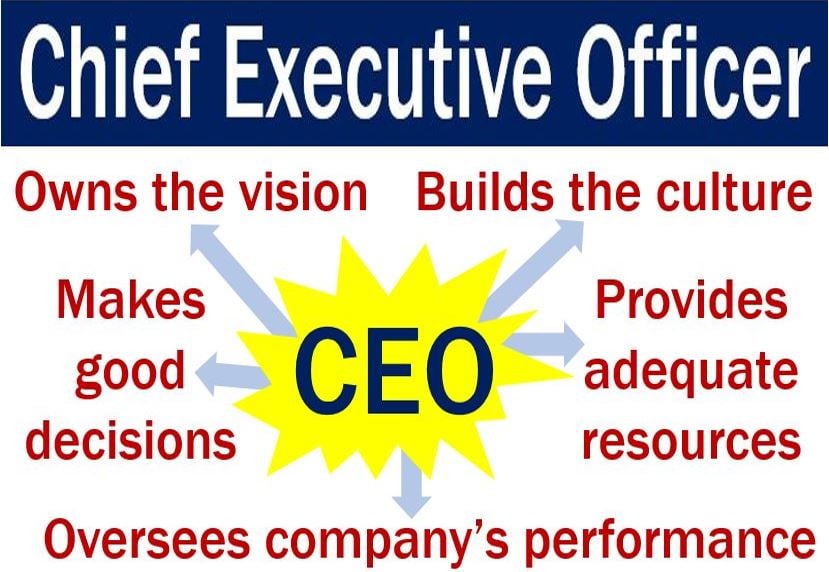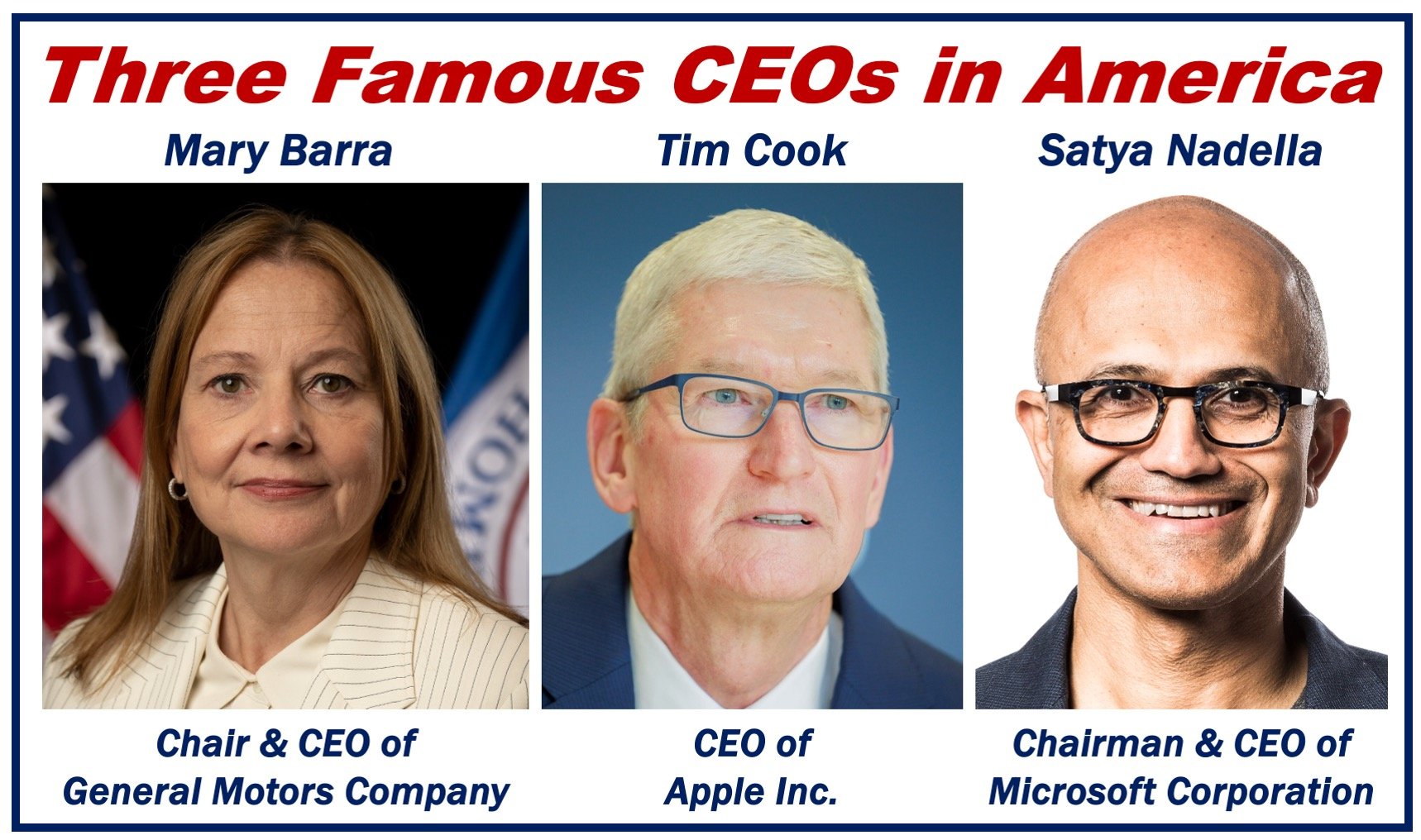A CEO or Chief Executive Officer is the head of a company. The CEO also leads the senior management team. They often lead the Board of Directors. In other words, the CEO is also Chairman of the Board. We sometimes use the term ‘President’ with the same meaning as Chief Executive Officer. However, this depends on the type of company.
The UK and some Commonwealth nations say ‘Managing Director’ with the same meaning as Chief Executive Officer. However, a growing number of companies today are adopting the term ‘Chief Executive Officer.’
Put simply; the Chief Executive Officer is responsible for a company’s overall operations and performance.
With the rise of digital transformation, CEOs are increasingly playing pivotal roles in driving technology strategies that align with their business objectives.
Do not confuse the term with General Manager (GM). A general manager is further down the management ladder.

CEOs should have intelligence, a great deal of energy, persistence, patience, and courage. They should also have excellent communication skills.
A good Chief Executive Officers needs to be both a great manager and leader.
Chief Executive Officer – the top manager
The Chief Executive Officer of a company or organization is its highest-ranking executive manager. They are responsible for their organization’s overall success.
Within that organization, CEOs have the last say. In other words, they are the ultimate authority to make final decisions.
The CEO is also the main link between the Board (board of directors) and the organization’s various parts. The company’s success is the Chief Executive Officer’s sole responsibility. Put simply; if the company fails, it is their fault.
CEOs should focus on just three things and delegate all other duties to their team.
The three things are:
- Set the company’s overall vision and strategy. They should also make sure that all stakeholders know what it is.
- Recruit, hire and keep the best people for the company.
- Make sure the company has enough cash in the bank.
In addition to their strategic responsibilities, Chief Executive Officers are increasingly expected to advocate for corporate social responsibility and sustainable business practices to align with global environmental and social governance standards.

The qualities of a good CEO
Doug Bruhnke, CEO of Growth Nation, said that great leaders must have the following attributes:
- Listening
- Storytelling
- Passion
- Responsiveness
- Simplicity
- Authenticity and transparency
- Ability to delegate
- A good communicator
- Confidence
- Humor
- Be positive
- Be able to learn and adapt
- To have a feel for the ‘bigger picture.’
CEO vs. Chairman
The CEO is accountable to the board of directors, which is led by the Chairman. In fact, the Chairman ‘chairs’ the board of directors. Shareholders elect the members of the board. A CEO may also be the Chairman of the Board.
C-level executives
There are several abbreviations that stand for corporate executives. The abbreviations that start with ‘c’ are the ‘c-level executives.’
The letters COO stand for Chief Operating Officer. This person reports directly to the Chief Executive Officer. The COO is in charge of fulfilling a company’s operational strategies.
The CIO or Chief Investment Officer heads investments in a business or financial institution. They are in charge of supervising and managing all investment activities.
CIO also stands for Chief Information Officer. This top executive is responsible for information technology management and making sure that information is usable and available.
The letters CFO stand for Chief Financial Officer. The CFO maintains and tries to boost a company’s long-term financial status and health.
CHRO stands for Chief Human Resources Officer. This person has the top human resources executive position.
The CMO or Chief Marketing Officer is the most senior marketing professional in a company.
Video explanation
This video explains what a ‘Chief Executive Officer or CEO’ is using simple and easy-to-understand language and examples.
